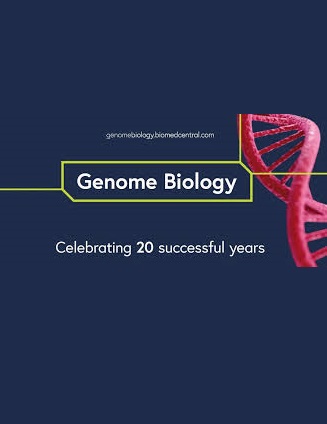Admixture as a source for HLA variation in Neolithic European farming communities
IF 10.1
1区 生物学
Q1 BIOTECHNOLOGY & APPLIED MICROBIOLOGY
引用次数: 0
Abstract
The northern European Neolithic is characterized by two major demographic events: immigration of early farmers from Anatolia at 7500 years before present, and their admixture with local western hunter-gatherers forming late farmers, from around 6200 years before present. The influence of this admixture event on variation in the immune-relevant human leukocyte antigen (HLA) region is understudied. We analyzed genome-wide data of 125 individuals from seven archeological early farmer and late farmer sites located in present-day Germany. The late farmer group studied here is associated with the Wartberg culture, from around 5500–4800 years before present. We note that late farmers resulted from sex-biased admixture from male western hunter-gatherers. In addition, we observe Y-chromosome haplogroup I as the dominant lineage in late farmers, with site-specific sub-lineages. We analyze true HLA genotypes from 135 Neolithic individuals, the majority of which were produced in this study. We observe significant shifts in HLA allele frequencies from early farmers to late farmers, likely due to admixture with western hunter-gatherers. Especially for the haplotype DQB1*04:01-DRB1*08:01, there is evidence for a western hunter-gatherer origin. The HLA diversity increased from early farmers to late farmers. However, it is considerably lower than in modern populations. Both early farmers and late farmers exhibit a relatively narrow HLA allele spectrum compared to today. This coincides with sparse traces of pathogen DNA, potentially indicating a lower pathogen pressure at the time.混合作为新石器时代欧洲农业社区HLA变异的来源
北欧新石器时代以两个主要的人口事件为特征:距今7500年前来自安纳托利亚的早期农民的移民,以及距今约6200年前他们与当地的西方狩猎采集者混合形成的晚期农民。这种混合事件对免疫相关人类白细胞抗原(HLA)区域变异的影响尚未得到充分研究。我们分析了125个人的全基因组数据,这些数据来自位于今天德国的七个考古早期农民和晚期农民遗址。这里研究的已故农民群体与沃特伯格文化有关,距今约5500-4800年。我们注意到,晚期农民是由西方男性狩猎采集者的性别偏见混合而成的。此外,我们观察到y染色体单倍群I是晚期农民的优势谱系,具有特定位点的亚谱系。我们分析了135个新石器时代个体的真实HLA基因型,其中大部分是在本研究中产生的。我们观察到HLA等位基因频率从早期农民到晚期农民的显著变化,可能是由于与西方狩猎采集者的混合。特别是单倍型DQB1*04:01-DRB1*08:01,有证据表明其起源于西方的狩猎采集者。HLA多样性从早期农民到晚期农民逐渐增加。然而,它比现代人群要低得多。与今天相比,早期农民和晚期农民都表现出相对狭窄的HLA等位基因谱。这与病原体DNA的稀疏痕迹相吻合,可能表明当时的病原体压力较低。
本文章由计算机程序翻译,如有差异,请以英文原文为准。
求助全文
约1分钟内获得全文
求助全文
来源期刊

Genome Biology
Biochemistry, Genetics and Molecular Biology-Genetics
CiteScore
21.00
自引率
3.30%
发文量
241
审稿时长
2 months
期刊介绍:
Genome Biology stands as a premier platform for exceptional research across all domains of biology and biomedicine, explored through a genomic and post-genomic lens.
With an impressive impact factor of 12.3 (2022),* the journal secures its position as the 3rd-ranked research journal in the Genetics and Heredity category and the 2nd-ranked research journal in the Biotechnology and Applied Microbiology category by Thomson Reuters. Notably, Genome Biology holds the distinction of being the highest-ranked open-access journal in this category.
Our dedicated team of highly trained in-house Editors collaborates closely with our esteemed Editorial Board of international experts, ensuring the journal remains on the forefront of scientific advances and community standards. Regular engagement with researchers at conferences and institute visits underscores our commitment to staying abreast of the latest developments in the field.
 求助内容:
求助内容: 应助结果提醒方式:
应助结果提醒方式:


